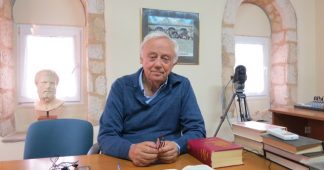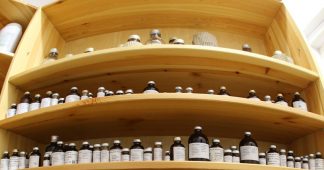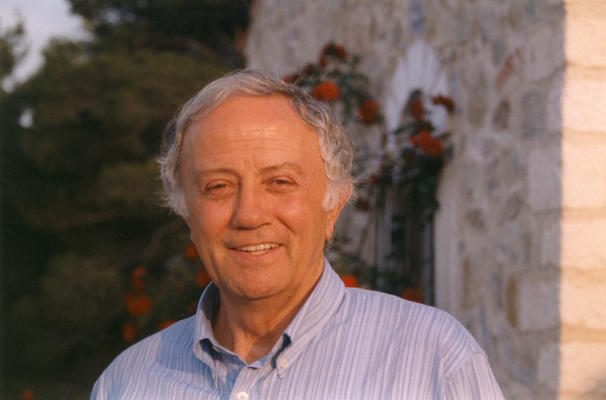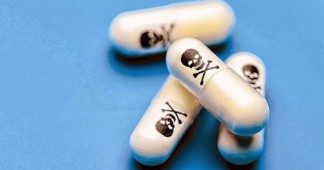Prof. George Vithoulkas is interviewed by Dr. Manish Bhatia. Prof. Vithoulkas explains his conception of miasms, suppression, genetic predisposition, chronic diseases, how the organism has priorities in reactions, and much more.
April 17, 2019
Dear friends, today we have with us Prof. George Vithoulkas, a name that needs no introduction and yet I have to give a brief overview of his tremendous achievements.
George Vithoulkas is today Honorary Professor at the University of the Aegean, Greece, Honorary Professor at the Moscow Medical Academy (Academy of Medical Sciences), Honorary Professor at the State Medical University of Chuvash Republic (Russia), Honorary Professor of the Autonomous (NonProfit) Organisation of Additional Professional Education-“National Educational Centre for Traditional and Complementary Medicine” (Russia), Professor at the Kiev Medical Academy, Honorary Professor of PHEE “Kyiv Medical University”, Honorary Professor at Dnipro Medical Institute of Complementary and Alternative Medicine (Ukraine), Collaborating Professor at the Basque Medical University (2001-2004), Doctor Honoris Causa of “Dr. Viktor Babes” University of Medicine and Pharmacy of Timisoara (Romania) and Doctor Honoris Causa of “Iuliu Hatieganu University of Medicine and Pharmacy of Cluj-Napoca (Romania). Also, he is Senior Associate Member of the Royal Society of Medicine, UK. In 1996, he was honored with the Right Livelihood Award (also known as Alternative Nobel Prize, www.rightlivelihood.org) “…for his outstanding contribution to the revival of homeopathic knowledge and the training of homeopaths to the highest standards”
MB: Prof. Vithoulkas, welcome to Hpathy.com once again! Today I would like to discuss with you the theory and practical utility of chronic miasms. It is a topic that seems to have divided homeopaths from day one and it would be nice to know your views and experiences about this theory given by Hahnemann. So my first question to you is: What does the term ‘miasm’ mean to you?
GV: It was very clear to me from the very beginning of my studies and I put down my thoughts in my main book “The Science Of Homeopathy” in 1976, p.126, that the idea of the miasms was nothing else than the genetic predisposition of the organism. https://www.youtube.com/watch?v=hzfqjj_33YI
In that time I wrote: “in this book (Science of Homeopathy) I will emphasize the term predisposition rather than “miasm.” In addition, I wrote: “I will not describe the detailed clinical signs and symptoms associated with each miasm,, in order to keep readers from being misled into the idea of prescribing specifically on the basis of the miasm alone.”
It is very clear from this paragraph, that I did not believe that a remedy could be found through the studying of miasms. Apart from the miasms, as we understand them in homeopathy, there are several other factors that determine the predisposition to diseases. The idea of predisposition through the 3 miasms, conceived by Hahnemann 250 years ago, only shows his genius, but certainly this was not the whole truth, as some of the homeopaths want to make it sound.
Later on, I gave the definition of a miasm:
In order to categorize a stress agent as a miasm acting in the way Hahnemann perceived, that could create a predisposition, it has to comply with the following parameters:
- It must start from an infectious agent (virus, bacteria, microbes etc) or a stress agent of a specific type -like vaccination or chemicals of any kind, like medical drugs or exposure to poisonous substances.
- Such an assault upon the organism has to be so strong as to be impossible for the organism to fight it and annihilate it in its entirety, and so the organism “stores” it in the form of a trauma in some part of the organism whether on a mental, emotional or physical level (in an organ or system).
- That such a specific trauma has to be passed on to the future generations in a specific form of symptoms-syndrome.
- That such a disturbance could be annihilated by providing to the organism the original substance that created the problem diluted and in a high potency.
So according to this definition there are many so called “miasms” than the three main ones that Hahnemann mentioned. What I also think important to say is that there is an intensity – a potentiality of each “miasm” that could go deeper and affect an organism or stay superficially and affect it less. As I wrote in the Science of Homeopathy “The degree of chronic weakness of the defense mechanism is a direct result of the intensity of the miasmatic influences.” …. “However, the vast majority of patients have been weakened through hereditary influence, drugs, or vaccinations, resulting in several layers of predisposition”
This idea of “several layers of predisposition” was one brought to light by me and I still think it’s valid today but not entirely understood by genetic scientists. This concept is extremely important as it can explain a lot of what is happening in chronic diseases when the organism is stimulated by an exciting cause (stress) repeatedly, and manifests one chronic condition after another. This concept tallies with the recent findings of Epigenetics.
MB: You have done some of your studies in India and have followed Kent and worked with or influenced most homeopaths over the last 40-50 years. How has your understanding and teaching of this concept of chronic diseases and their relation with miasm evolved over this long period of time?
GV: My studies in India in the early sixties did not provide me with more information than what I already had accumulated by studying the classic literature in those years. As I said before, my ideas concerning miasms were my experience of the then 15 years of practice and were as I described them in the chapter “Predisposition” in my book the Science of Homeopathy written originally in 1975. I have given more details on the “levels of predisposition” in my other book written 10 years later in 1985, the “New Model for Health and Disease” https://www.vithoulkas.com/learning-tools/books-gv/new-model-health-and-disease If one is a good reader he will discover in those books all my thinking concerning the miasmatic theory or, if you want to say, the “genetic predisposition theory” which was developed later on and also will get my original thoughts that fit the latest discoveries of epigenetics.
I suspect that some of those scientists must have read my books and seen the main lines of ideas. I am sure we would have benefited much more, all of us, from an exchange of ideas. Epigenetic Scientists have to discover much more of the most subtle recesses of the human organism affected by disease. It is a subject to which I am referring in the New Model, and cannot be approached so far by modern science, in spite of the sophisticated technology at their disposal.
MB: So according to your observation, it is not just an infection but any stress that fulfills your four conditions to be called a ‘miasm’?
GV: No, not any stress can be called a miasm, in the sense we are using these definitions. But apart from the three main miasms of Hahnemann, if a chemical is inserted into the organism or a vaccination and if:
- It can cause an inflammatory process http://www.medscimonit.com/fulltxt.php?ICID=878341 , that stays as a trauma within a deeper recess of the organism.
- If the effect of such a trauma can be passed on to the next generation.
- And if the original substance that caused the problem – the chemical e.g. penicillin, cortisone etc. or the particular vaccine (Variolinum, morbilinum, etc) – can act curatively and annihilate the problem, like Psorinum, Syphilinum and Medorrhinum nullify the hereditary effect of syphilis, gonorrhea or psora.
- then only can we call it a miasm in the Hahnemannian sense.
So therefore we can be talking about a small pox miasm, or a tuberculous miasm or a penicillin miasm, once the original stressors that caused the problem can also annihilate them.
Apart from these explanations that show clearly that the effect of infections if treated badly remain in the organism in a disguised form, there are all many other stresses of all kinds – pollutions in general – that are forming the infinite complexity of human modern diseases, that are so mixed in their nature that no one can trace their origin and attribute them to a specific factor. It might be the effect of all the above parameters together. For us it is important for the prognosis to have an organism in which we can discover the main origin of the problem, as this indicates a strong immune system and then a good prognosis and the cure id secured.
MB: What are your thoughts about Hahnemann’s miasms? Do you see them as chronic infections or syndromes resulting from chronic infections and their suppression?
GV: I am considering the specific miasms mentioned by Hahnemann, as traumas that originated from an acute infections that were treated badly (suppressed) and since then, remained dormant in the deeper parts of the organism, until the organism was subjected to a specific shock that activates this inner trauma and starts a process of chronic sub-acute inflammation that we call chronic conditions or degenerative diseases.
MB: How do you see the concept of Psora? Is it related to Scabies or itch, or is it a hydra-headed monster, giving rise to numerous disease forms, or the ‘original sin’ of Kent, or the fundamental susceptibility of every human being, or a mistake of Hahnemann?
GV: There is no mistake of Hahnemann in this respect. Psora – the Greek word for scabies – can be easily suppressed and leave its stigma in the organism. I do not know whether it is due to the original sin or not. What I know is that people who contracted syphilis or gonorrhea (the other two miasms of Hahnemann) did not contract it in places like a church. If your question is: from where and why diseases originated in the first place, my answer surely is, I do not know.
MB: You have said that it is important that the original stressor in potentised form is able to bring about cure. But Hahnemann’s mainstay for the miasms Psora, Sycosis and Syphilis were Sulphur, Thuja and Mercury. So why is it necessary that the substance or pathogen creating the chronic stress is used isopathically and antimiasmatically?
GV: For me the proof that there is a specific miasm running through a family, from generation to generation, is the fact that the symptomatology of the original infecting agent remains through the generations and can be used as the simillimum, which cures the case. Many cases, for instance that need Medorrhinum have confirmed that their parents had got gonorrhea. This is especially evident when we investigate the case of a child and the remedy that comes up is Medorrhinum. The immediate question to the parents should be whether they had contracted gonorrhea before the birth of the child. The answer, in most of the cases, is positive.
The same is true with all other infecting agents but Hahnemann had a different perception than the one we have today. What actually happens is that after such an infection not every organism remains with the pathognomonic symptoms of the original stressor but the symptom-syndromes that develop are the mixed results of the treatment together with the trauma of the infecting agent. Every organism brings up as reactions, its own predispositions and sensitivities. So we frequently see mercury for instance, indicated frequently in treating syphilitic patients, because the preferred treatment of those times were mercury preparations. The same is with psora that was treated with Sulphur ointments. But some strong organisms maintain the pathogenesis of the original stressor and this is important for us, because we then understand that the present symptomatology and overall pathology of the patient requiring Syphilinum originates from his acquired or inherited syphilitic miasm. The same with acquired or inherited gonorrhea when Medorrhinum is indicated and it is found that the genitors had been infected by the gonnococus. The same with psorinum.
MB: In your clinical experience, have you seen cases where the parents or grandparents have suffered from some chronic infectious disease like Gonorrhea, Syphilis or Tuberculosis and there are specific symptom syndromes or disease susceptibility or changes in constitution in future generations that never contracted those infections?
GV: As I said before I have seen cases where there is evidence that the parents were infected. In other cases, you cannot confirm this or even the opposite is true -no infection from parents- but who can investigate the life of the forefathers? It is of great interest to us in any case, that symptoms of Medorrhinum for instance or Syphilinum appear even when we cannot trace the original person who may have been infected by the disease. What is more interesting is the fact that when these nosodes are prescribed for the present diseases of a patient, whose symptomatology has nothing to do in their symptoms with the original infection, such pathology is treated successfully by the respective nosode.
MB: If you have observed a correlation between the history of chronic infections in past generations and their effects in current and future generations – how consistently are such effect/relations visible? Can you also provide details of what correlations you have observed between the history of chronic infections in past generations and their effects in current and future generations?
GV: The only correlation I can see is the fact that an X pathology (R.A. or M/S) requires a Z nosode (Med. or Syph.) in spite of the fact that the patient or his genitors were never infected by the primary infection of the Z disease. To analyze this phenomenon will take a lot of projections, which I do not want to go into it at this moment, as there is not enough space in an interview. Yet, one can ask a basic question: if acute inflammatory diseases leave their stigma in the organisms that pass through from one generation to another, then it is logical to think that the human race will eventually disappear under the influence of degenerative chronic diseases. Yet nature has given us ways to regenerate and produce a new generation that could be better than the parents. Such a mechanism is described in my paper “How can healthier children be born? A hypothesis on how to create a better human race” https://www.medscihypotheses.com/abstract/index/idArt/907698
This is an issue that epigenetics is dealing with. I do not know whether this investigation has started after listening to my lectures in the nineties already, or whether some others had observed similar phenomena. But it is true that the moment of conception is of utmost importance as the organisms fluctuate in health conditions from the lowest to the highest possible state within a specific time frame, something I have explained in my book “A New Model for Health and Disease”. This book was published in the 80s.
When the organisms of the two prospective parents are found in the top condition of their health, then the offspring will be a regenerate being and in better health than the parents. The conditions that this can happen I have explained in my paper that I mentioned before. Epigenetics is a branch of genetics and it will become a very important branch, as it is an investigation that will reveal eventually the mechanisms by which the human race could be regenerated.
MB: Clinically, how do you apply this concept? Do you classify every patient and remedy belonging to a specific miasm and then apply the suitable remedy, or do you think of the miasm only if a nosode is coming up in repertorization/symptomatology? Is it necessary to classify every patient as Psoric, Sycotic and Syphilitic to find the correct remedy, or will just taking care of the totality of symptoms be sufficient in most cases?
GV: Very good questions. In the beginning of my practice I used to take care of the miasmatic theory and prefer to give first a remedy that appeared to be suitable to a miasmatic condition of the patient. So instead of giving Ignatia for instance that was the most probable according to the analysis and repertorization, I would go straight to Thuja because of the warts and some mental/ emotional traits fitting this remedy, thinking that this was a deeper remedy. I found that the Thuja was not giving the results I expected but after I had prescribed Ignatia as the first remedy, then the Thuja was acting.
Such examples that happened frequently made me rethink the idea of the miasm and then I understood that the genetic predisposition of a person has multiple layers that were separated by barriers of protective tissues that would not allow the manifestation of all genetic faults of the organism to manifest at once under a specific stress. That means that under a specific stress, the organism will manifest as pathology – symptomatology- only ONE part of its multiple genetic weaknesses, never all of its genetic predispositions. If an organism had a predisposition towards psoriasis, this disease would manifest after the first stress, but the deeper predisposition for a compulsive neurosis would not develop unless the psoriac eruption was suppressed by chemical drugs.
The organism has “priorities” in reactions. Such reactions are mobilized by the immune system under specific stresses. The organism has an extraordinarily organized system of protection that would allow only one layer of pathology at a time to manifest through a different set of symptoms each time. Such pathology will go deeper and deeper, if the organism was attacked by successive stresses within a period of time and in case the organism had no time to recover from the previous stress and the trauma it had caused. I have given more details about this issue in my book the New Model for Health and Disease”. So, the idea of the miasm can give us only an estimation of the underlying pathology but not the solution for the choice of the remedy.
There is so much confusion in this matter that some teachers are still insisting in connecting the choice of the remedy to the miasms, something that restricts the correct sequence of remedies that a distressed organism needs in order to recover. This confusion has resulted from the experience of some who once prescribed a sycotic remedy like Thuja or Medorrhinum in a case with condylomata and the remedy acted, but they were ignoring the fact that if they had taken a full case they would have actually seen a full picture of the remedy. But in many cases the first correct remedy could have been a different one.
A lot of our failures are due to the fact that these rules are either ignored or not understood.
MB: Thank you for these wonderful insights Prof. Vithoulkas. It has been a pleasure talking to you about this much debated but very less understood concept of chronic miasms. I am sure our readers our going to enjoy this conversation. Thank you once again!










